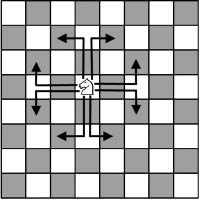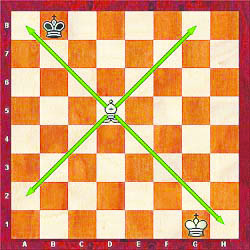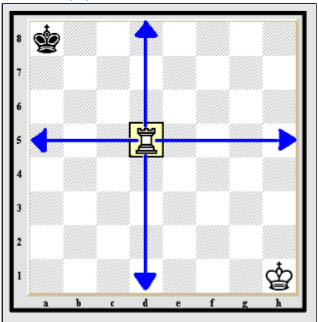
In last week’s introduction to chess, the pieces were named, and the start position of the game indicated. Today we will specify the movements of three of the pieces, which are the Rook, the Knight and the Bishop.
Rook
The Rook is a chess piece that moves in a straight line vertically or horizontally over any number of unoccupied squares. Each side begins with two Rooks which initially occupy the corner squares. The Rooks play little part in the opening and are the final pieces to be moved. They are most effective in the middle game and ending when they can seize and operate along open files. The piece originally represented a chariot and its move has remained unchanged throughout the history of chess. A representation of the Rook is depicted atop of the YMCA building at the corner of Thomas and Camp roads.

Knight
The Knight moves either one square horizontally and two squares vertically or two squares vertically and one square horizontally. Each side begins with two Knights which initially occupy the squares between the Rook and Bishop. To children, the Knight is affectionally referred to as a horse. The Knight’s move gives it certain peculiarities. Unlike the other chess pieces, it cannot be blocked although it cannot land on a square already occupied by one of its own men. It can cover a maximum of eight when in the centre of the board, but this decreases to two when the Knight is on a corner square. Thus, a Knight on the edge of the board is always in danger of being hemmed in and captured. The Knight’s power varies during the game in keeping with the position. It is strongest in the middle game when it is comparatively unhindered by pawn chains. In the endgame its lack of range can be a decisive weakness. Its approximate value is equal to that of three pawns or one Bishop. The move of the Knight has remained throughout the history of chess.

Bishop
The Bishop moves diagonally over any number of unoccupied squares. It is confined to the same coloured squares throughout the game as it cannot move vertically. Each side begins with two Bishops which initially occupy the squares between the King or Queen and Knight. Although the Bishop is restricted to half the board this is compensated for by its great range. Its approximate value is equal to that of three pawns or one Knight. The modern move of the Bishop was created in the late 14th century.








